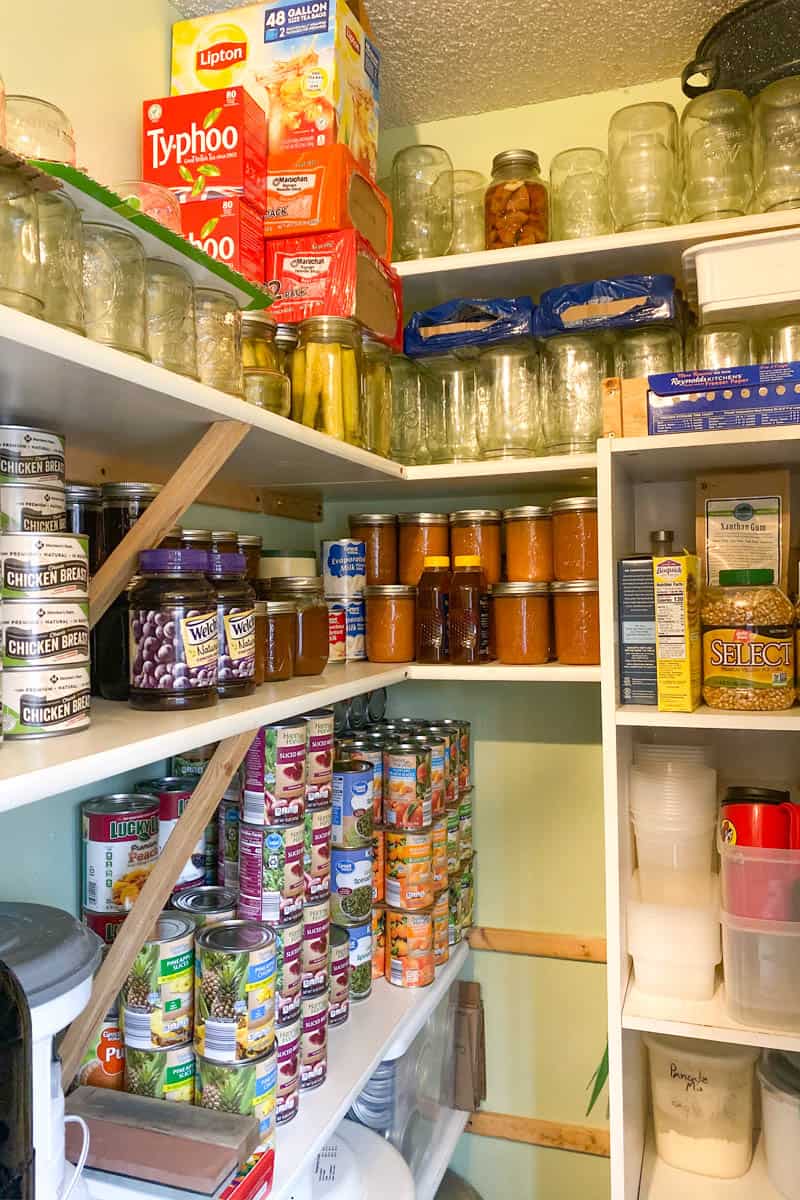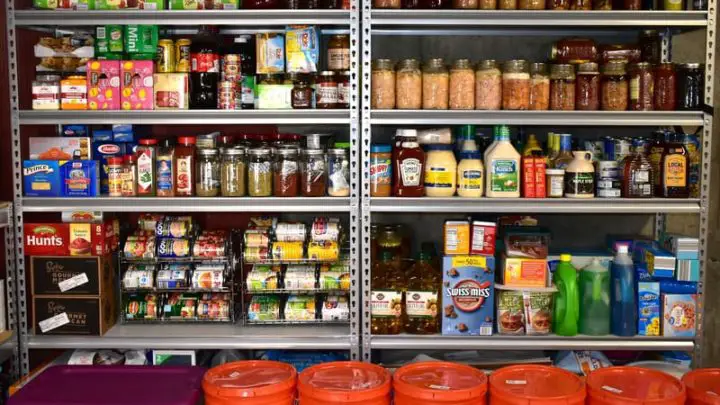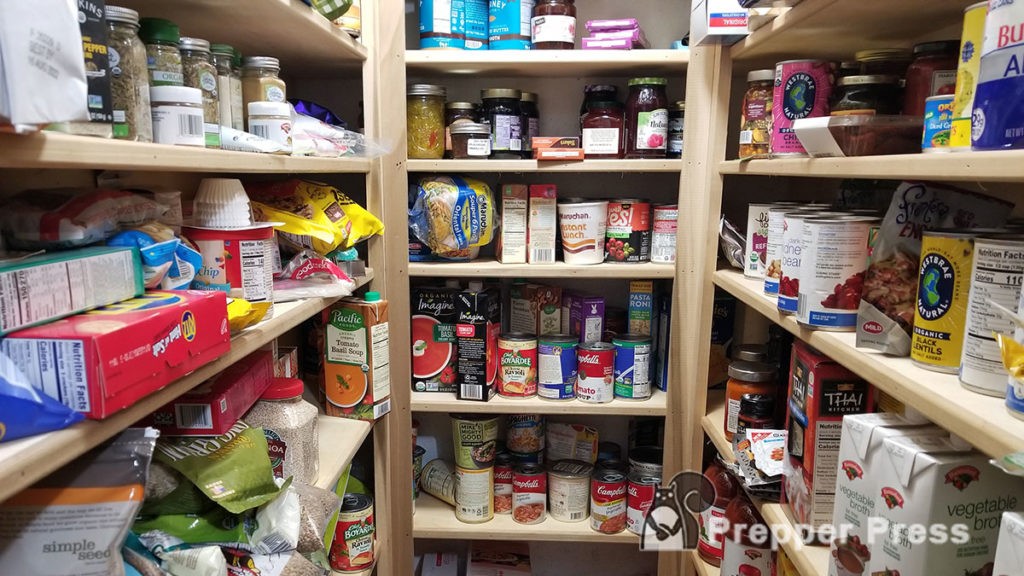Introduction
Preppers are people who take steps to prepare for emergency situations. This can include things like stocking up on non-perishable food, having a plan for evacuation, and storing supplies in case of power outages or other disasters. How do you stock a prepper pantry?
A prepper pantry is a great way to be prepared for anything that might come your way. By stocking up on items that have a long shelf life, you can rest assured that you will have food and supplies even if there is an emergency. Here are some tips for stocking a prepper pantry:

- Choose non-perishable items: The first step is to choose items that have a long shelf life and do not need to be refrigerated. Canned goods, dried fruits and vegetables, rice, pasta, cereal, and beans are all good choices.
- Rotate your stock: It is important to rotate your stock so that the food does not go bad before you have a chance to eat it. Use the oldest items first and replenish your food supply as needed.
- Store in airtight containers: Be sure to store your food in airtight containers or bags to keep pests out and extend the shelf life of your food.
- Consider your family’s needs: When stocking your pantry, consider the needs of your family. If you have young children, for example, you will need to make sure you have baby formula or diapers on hand. If you or someone in your family has special dietary needs, be sure to stock accordingly.
- Have a plan: In addition to stocking up on food and supplies, it is also important to have a plan for what you will do in case of an emergency. Make sure everyone in your family knows where the emergency supplies are stored and how to use them.
The basics of stocking a prepper pantry
A prepper working pantry is a pantry that is stocked with food and supplies that will last for a long period of time in case of an emergency. The first step to stocking a prepper pantry is to choose non-perishable foods that have a long shelf life. Some examples of non-perishable foods are canned goods, dried beans, and rice. Once you have chosen your non-perishable foods, you will need to purchase enough to last for a minimum of three months.
Non-perishable items
When stocking your prepper pantry, it’s important to have a variety of non-perishable items on hand. Here are some basic items to get you started:
-Canned goods: Look for canned fruits, vegetables, soups, and meats. Canned goods have a long shelf life and can be a good source of nutrition in an emergency situation.
-Dry goods: Items like rice, pasta, cereal, and flour have a long shelf life and can be used to make a variety of meals.
-Peanut butter: Peanut butter is a good source of protein and can be eaten with crackers or bread.
-Jams and jellies: Jams and jellies can add sweetness to a meal or be used as part of a peanut butter sandwich.
-Condiments: Condiments like ketchup, mustard, and mayonnaise can add flavor to meals.
-Cooking oil: Cooking oil can be used for cooking or frying foods.
-Baking supplies: Baking supplies like flour, sugar, baking powder, and baking soda can be used to make quickbreads, cookies, or other desserts.
Perishable items
The first thing you need to do when stocking your prepper pantry is to figure out what items you will need to rotate. If you are not sure how much food your family will consume in a year, the best way to start is by buying non-perishable items in bulk and then slowly adding perishable items as you use up the non-perishables.
A lot of people make the mistake of thinking that they need to buy everything all at once, but this is not the case. Start small and then gradually add to your stockpile as you use up what you have.
Perishable items such as meat, dairy, and fresh produce will need to be rotated more frequently than non-perishables. These items can be stored in the freezer for longer periods of time, but they will eventually spoil. Keep track of expiration dates and be sure to use these items before they go bad.
Canned goods
Canned goods are a prepper pantry staple for good reason. They have a long shelf life, they’re inexpensive, and they’re easy to store. When stocking your prepper pantry with canned foods, focus on cans that have a high water content such as fruits, vegetables, soups, and stews. These will help you stay hydrated in an emergency situation.
Here are some other things to keep in mind when stocking your prepper pantry with canned goods:
-Buy in bulk when possible. This will save you money in the long run.
-Check the expiration dates on all of your canned goods and rotate them regularly.
-Don’t forget about can openers! Make sure you have at least one manual can opener and one electric can opener.
-Canned goods are a great way to add variety to your prepper pantry. Be sure to stock up on a variety of fruits, vegetables, soups, and stews.
-When stocking your prepper pantry with canned goods, focus on high water content items such as fruits, vegetables, soups, and stews. These will help you stay hydrated in an emergency situation.
Dry goods

Start with the basics: flour, sugar, salt, spices, and baking powder/soda. Then, add whatever else you commonly use in your cooking. Here are some ideas to get you started:
- Beans
- Rice
- Pasta
- Oats
- Canned fruits and vegetables
- Condiments such as ketchup, mustard, and mayo
- Cooking oil
- Salt, pepper, and other spices
Frozen goods
Frozen goods are a great way to keep food fresh and extend its shelf life. When stocking your prepper pantry, be sure to include plenty of frozen fruits, vegetables, and meat. These items can be used to make quick and healthy meals in a pinch.
Frozen fruits and vegetables are a great way to add nutrients to your diet. They can be used in smoothies, soups, and stews. Frozen meat can be used for quick meals such as sandwiches, tacos, and burritos.
When stocking your prepper pantry with frozen goods, be sure to buy in bulk and choose items that are on sale. This will help you save money and stock up on food that will last you a long time.
How to Stock Your Prepper Pantry with Real Food?
You’re a prepper or someone who is prepared for an emergency or disaster. You’ve stocked up on non-perishable items like canned goods, dehydrated foods, and other long-term storage staples. But now you’re ready to take your prepper pantry to the next level by stocking it with real food.
Real food is nutrient-rich, fresh, and seasonal. It’s more likely to be free of preservatives, artificial colors, and other questionable ingredients. Eating real food can also be affordable and convenient since it doesn’t require a lot of preparation.
Here’s how to stock your prepper pantry with real food:
1. Start with Staples. Before stocking your pantry with fresh foods, start by stocking up on pantry staples like grains, legumes, oils, and vinegar. These staples can form the basis of many delicious dishes without requiring a lot of extra ingredients.
2. Choose Seasonal Fruits and Vegetables. When shopping for real food, choose fruits and vegetables that are in season. Not only are they typically cheaper and fresher, but they also offer more variety.
3. Buy Local. Whenever possible, buy local produce. Not only will you be supporting local farmers, but you may also be able to find more nutrient-dense produce.
4. Buy in Bulk. To save even more money, shop in bulk. You can buy larger quantities of grains and legumes, which will last a long time in storage.
5. Store Food Wisely. To keep your real food from going bad, store it in a cool and dry place. Make sure to label and date all containers so you know what’s in them and when they were purchased.
By stocking your prepper pantry with real food, you’ll have access to a variety of nutrient-dense, fresh food for your emergency preparedness needs. Just make sure to shop wisely and store your real food properly.
Tips for stocking a prepper pantry
Stock your prepper pantry with foods that have a long shelf life and are nutritious. Canned goods, dried goods, and freeze-dried foods are all great options. Be sure to rotate your food regularly so that nothing goes to waste.
Planning ahead
When stocking a prepper pantry, it is important to remember the rule of three: you need three weeks’ worth of non-perishable food and water for each member of your family. This may seem like a lot, but Gase says it’s better to have too much than not enough. “It’s easier to ration when you have more than you need than when you have less,” she says.
To get started, make a list of every non-perishable food item and household essential you can think of. That might include things like canned goods, dry goods, sauces and spices, condiments, religious or cultural items, pet food, diapers and baby formula, first-aid supplies, and personal care items. Once you have your pantry list, start stocking up gradually so you don’t end up with more than you can realistically use before it expires. And be sure to rotate your supplies so that everything stays fresh.
Creating a list
Creating a list is the best way to know what you need and not forget anything. Start with the basics that every kitchen should have such as spices, oils, flour, sugar, salt, coffee, tea, and canned goods. Then think about items you use on a regular basis and would need in an emergency such as milk, butter, eggs, chicken, beef, and vegetables.
Don’t forget about pet food and supplies too. It’s also important to have a few days’ worth of non-perishable snacks and drinks on hand in case you can’t get to the store. Once you have your list, start stocking up little by little so it doesn’t all come at once. That way you can rotate your supplies and always have fresh items on hand.
Making a budget
One of the most important aspects of stocking a prepper pantry is making sure you do it within your budget. That means taking a close look at your finances and understanding how much you can realistically afford to spend on food storage. Once you know that number, you can start looking for deals and ways to get the most for your money.
Here are a few tips for stocking a prepper pantry on a budget:
-Start with the basics. Don’t try to stock everything at once. focus on getting the essentials first, and then slowly build up your pantry as you can afford it.
-Look for sales and coupons. This is an easy way to save money on groceries, and it can also help you get more for your money when stocking a prepper pantry.
-Buy in bulk. This can be a great way to save money, especially if you find a good sale. Just be sure to only buy what you need and can reasonably use before it goes bad.
-Make your own food. Homemade foods are often cheaper and healthier than store-bought alternatives. Plus, they can be just as easy to make ahead and store for later.
Shopping in bulk
One of the best ways to save money and ensure you always have food on hand is to shop in bulk. This means buying large quantities of food at a discount. You can find bulk discounts at many stores, including warehouses, online retailers, and even some regular grocery stores. When shopping in bulk, be sure to:
-Check the expiration date: Make sure you can use the food before it expires. If you won’t be able to eat it all before it goes bad, consider donating or giving it away to friends or family.
-Think long term: When stocking your pantry, think about the long term. Choose foods that have a long shelf life and that you know you and your family will actually eat. There’s no point in stocking up on things that will just end up going to waste.
-Store properly: Be sure to store your food properly so that it doesn’t go bad prematurely. This means keeping things like flour and sugar in airtight containers and storing canned goods in a cool, dry place.
Rotating your stock

A prepper pantry is a bit different than a usual one in that it is packed with non-perishable items that will see you through a short-term emergency or even long-term future disaster. But, like any other pantry, it needs to be properly stocked, organized, and maintained. Here are some tips on how to do just that.
One of the most important things to remember when stocking a prepper pantry is to rotate your stock. This means that you should regularly use the items in your pantry and replace them with fresh ones as needed. This will ensure that your food is always fresh and edible and that you don’t end up with a lot of expired food in your pantry.
To rotate your stock, make sure to label all of the food in your pantry with the date it was purchased or canned. This will help you keep track of when you need to use it or replace it. When you use something from your pantry, simply cross out the old date and write in the new one.
It’s also a good idea to create a stock rotation schedule so that you know exactly what needs to be used up and when. For example, you may want to use up all of your canned goods within six months and dry goods within a year. This will help you make sure that nothing in your pantry expires before you have a chance to use it.
Conclusion
Prepping for an emergency is a lifesaving activity. By taking the time to stock a pantry with non-perishable food items, you can rest assured that you and your family will have access to nutritious meals in the event of a power outage or other unforeseen disaster.
Make sure to include a variety of food items in your pantry, such as canned fruits and vegetables, dried beans and rice, pasta and sauce, peanut butter and jelly, cereal, and granola bars. Remember to rotate your food items regularly so that they stay fresh. And don’t forget to include a can opener!
